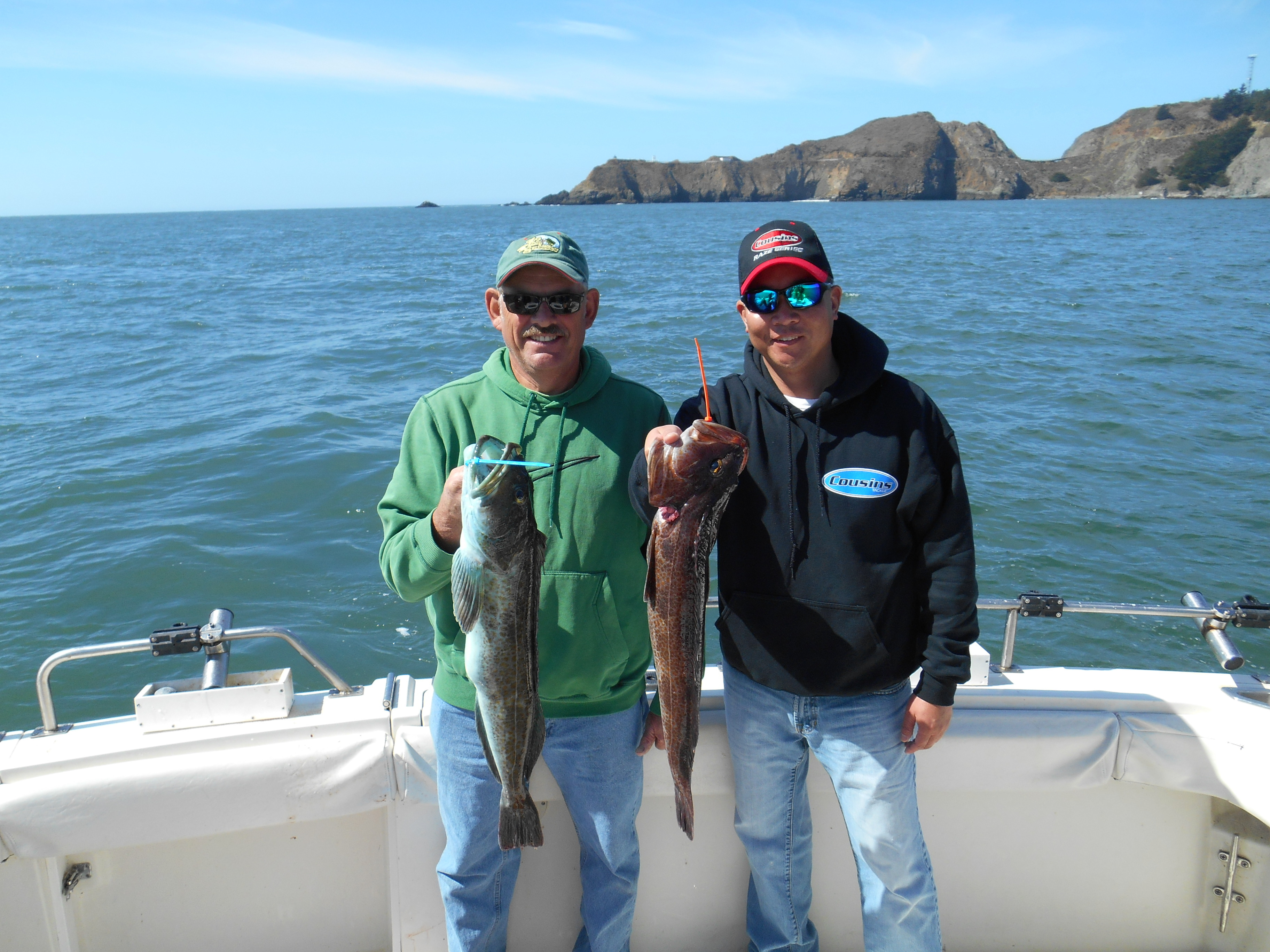Groundfish Limits Increase Could Be A Boon For West Coast Fishing

Our correspondent Mark Fong (above right) told me about a rockfishing trip he took last weekend out of Bodega Bay. Fong and his buddy Ian Rigler (above left) brought home plenty of lingcod and rockfish fillets for their freezers. It’s a productive time for deep-sea fishing off the California coast, as this L.A. Times story this week from reporter Louis Sahagun reports:
But with stocks rebuilding faster than anticipated, federal officials on Tuesday boosted catch limits by more than 100% for some species of rockfish in a move they said would help revive West Coast bottom trawlers and sportfishing fleets.
The National Oceanic and Atmospheric Administration’s action is expected to result in anglers taking about 218,000 additional annual trips in coastal waters — about 148,000 of them between Santa Barbara and San Diego.
Officials say the move could generate an estimated 900 jobs and up to $54 million in annual revenue in West Coast states in 2019, including about 630 jobs and $44 million in Southern California. It may also put fresh, locally caught varieties of rockfish commonly sold as red snapper back on dinner plates in Southern California restaurants, which currently rely almost entirely on frozen seafood imported from Mexico and around the world.
Here’s more from NOAA’s release on the increases and potential impact:
Those continued collaborative and scientific efforts made higher annual catch limits possible for many groundfish species for 2019 and 2020. This will increase recreational and commercial fishing for bocaccio, darkblotched rockfish, Pacific Ocean perch, lingcod north of the California/Oregon border, and California scorpionfish. The new rule also reduces depth restrictions for recreational fishing and increases trip limits for fixed-gear fishermen.
The changes are expected to boost commercial and recreational fishing revenues, with sport anglers expected to take thousands more fishing trips off the West Coast as a result. Their spending on motels, meals, charter trips, and more is expected to boost recreational fishing income coast-wide by about $55 million, with the largest increases in California.
The harvest rule changes also promote quota trading among fishermen in the Shore-based Individual Fishing Quota Program, also known as the Groundfish Catch Share Program, which will help them make the most of the new fishing opportunities. The changes will also allow increased catches of underutilized species, such as yellowtail rockfish, lingcod, chilipepper rockfish, and Pacific cod.
Although the bycatch of Chinook salmon in the groundfish fishery is low and is expected to remain low, this new rule adds tools for NOAA Fisheries and the Pacific Fishery Management Council to respond quickly to address any unexpected changes in the amount of bycatch.



